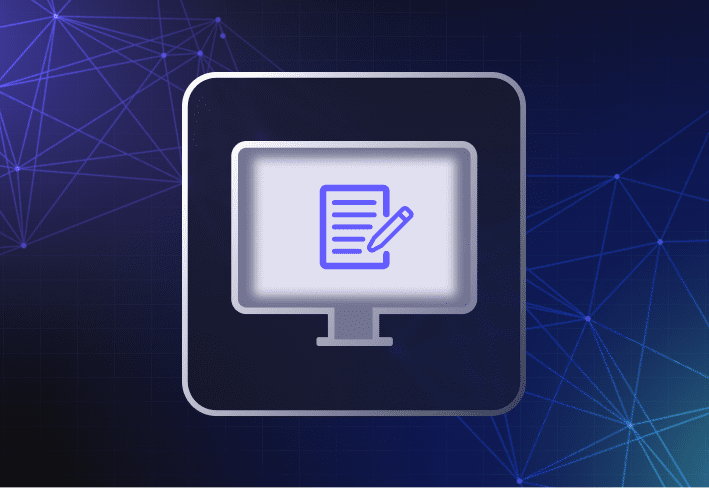Here’s something we can all agree on: Microsoft licensing is really confusing. But never fear! I'm here to provide some clarity on the different types of Microsoft and Office 365 licenses. That’s right — I took on the burden of having several dozen Chrome tabs open so you don’t have to.
Let’s get right to it!
Types of Microsoft and Office 365 licenses for businesses
You have two main choices when it comes to Microsoft and Office 365 licenses for businesses: the business service family (as Microsoft calls it) and the enterprise service family. For simplicity’s sake, we’ll call these service families categories because that’s what they really are: main categories that each offer several plans.
The business category covers up to 300 users and includes these four plans:
Microsoft 365 Business Basic
Microsoft 365 Business Standard
Microsoft 365 Business Premium
Microsoft 365 Apps for business
More than 300 users? That’s when we move into the enterprise category, which supports an unlimited number of users through these plans:
Office 365 E1
Office 365 E3
Office 365 E5
Microsoft 365 F1
Microsoft 365 F3 (includes Office 365 F3)
Microsoft 365 E3 (includes Office 365 E3)
Microsoft 365 E5 (includes Office 365 E5)
Microsoft 365 Apps for enterprise
That’s a lot of letters that feel random. Don’t worry — they’ll make sense soon!
What’s the difference between Office 365 and Microsoft 365 licenses?
In short, Office 365 licenses focus solely on apps, such as Microsoft Word, PowerPoint, Outlook, etc., while Microsoft 365 licenses include those apps and other features. Microsoft 365 licenses come with identity/access management, threat protection, and endpoint/app management features that Office 365 licenses don't include.
You can check out Microsoft’s comparison page for Office 365 and Microsoft 365 for more details.
Microsoft and Office 365 for business plans
If you have a small business (fewer than 300 employees), you’ll want to consider an Office 365 for business plan. We’ll give you the rundown, and you can compare the Office 365 for business plans for yourself on the official website (don’t ask me how long it took me to find this page).
Here’s the TL;DR scoop:
Microsoft 365 Business Basic plan: If you’re looking for the basics — apps like Microsoft Word, decent cloud storage, standard security — and nothing more, go with the (appropriately named) Microsoft 365 Business Basic plan ($6/user/month).
Microsoft 365 Business Standard plan: If you want to be able to work offline, install your apps on your machines, host webinars, and get into data visualization via Microsoft Access, go with the Microsoft 365 Business Standard plan ($12.50/user/month).
Microsoft 365 Business Premium plan: If you want all the bells and whistles — and enhanced security features with Microsoft Defender — grab the Microsoft 365 Business Premium plan ($22/user/month). This plan also includes the beast that is Microsoft Entra ID (formerly known as Microsoft Azure) and Microsoft Intune.
Microsoft 365 Apps for business plan: Want the apps and nothing more? Check out the Microsoft 365 Apps for business plan ($8.25/user/month).
Microsoft 365 Business Basic plan
Each tier (excluding Microsoft 365 Apps for business) builds upon the last one. With the Microsoft 365 Business Basic plan, you get web and mobile apps, such as Microsoft Word, Microsoft Excel, Microsoft Outlook, and Microsoft PowerPoint. You also get at least 1 TB of cloud storage for each of your users, business-class email, standard security, and 24/7 phone and web support.
Microsoft 365 Business Standard plan
As you move up to the next tier — Microsoft 365 Business Standard — you get all the features of the Microsoft 365 Business Basic plan plus the ability to install your apps and work offline.
Microsoft 365 Business Premium plan
And once you move to the Microsoft 365 Business Premium tier, you get all the previously mentioned features plus device management, the ability to remotely wipe devices, advanced security tools, controlled access to your company’s data, and cyberthreat protection.
Microsoft 365 Apps for business plan
Microsoft 365 Apps for business is kind of an island unto itself. It excludes chat, meeting, and calling features and only provides installable desktop apps, such as Microsoft Word and Microsoft Excel.
Microsoft and Office 365 for enterprise plans
More users? More problems. Just kidding (b̶u̶t̶ ̶n̶o̶t̶ ̶r̶e̶a̶l̶l̶y̶), but if you have more than 300 users in your environment, you’ll want to consider a Microsoft or Office 365 for enterprise plan.
Changes to enterprise licensing options
On April 1, 2024 (look at Microsoft, coming in hot with their perfect timing), Microsoft announced it would change its licensing structure for Microsoft 365 and Office 365. Now, Microsoft Teams is a standalone product that you can license for $5.25/user/month. This change in pricing impacts only enterprise plans.
This is good news if your enterprise business doesn’t need Teams because each plan’s base price has dropped by a few dollars. But if you need to tack on a Microsoft Teams subscription, unfortunately, your total cost will increase.
Other add-on services you can bundle with your enterprise license include Copilot for Microsoft 365 ($30/user/month or $360/user/year), Microsoft Viva (pricing depends on desired features), Microsoft Priva Privacy Risk Management ($5/user/month), Microsoft 365 E5 Security, Microsoft 365 E5 Compliance ($12/user/month), Microsoft Syntex, and Windows 365. Note that these services are only available for some of the plans. (I like making random choices too, Microsoft. 😅) Below, I've included a list of the available add-ons for each Microsoft license type.
I'll save you some time with another TL;DR summary:
E (information workers) and F (frontline worker) plans: Do your users largely work from a desk? Look at the information workers, or “E,” plans. If your users are more on-the-go, look at the frontline workers, or “F,” plans.
Windows OS plans: If you want your plan to include the Windows operating system, check out the plans with “Microsoft” in their names. The Office plans include only web-based or cloud apps, like Excel and Outlook.
Microsoft 365 E5 plan: If security is a major concern for your business, or if you need advanced analytics tools, go ahead and grab the Microsoft 365 E5 plan ($54.75/user/month). It’s the most comprehensive and tailorable plan in terms of security and compliance.
Microsoft 365 Apps for enterprise plan: Need the apps and nothing more? Consider getting the Microsoft 365 Apps for enterprise plan ($12/user/month).
Microsoft Copilot: If you need Microsoft Copilot, you can add it onto any of the Office 365 plans.
Add-ons: You can add on certain services, depending on the type of plan you go with. More on that below.
You’ll notice each of these plans is prefaced with either an E or an F. Plans that include the E are built for information workers in an enterprise environment, and plans that include an F are designed for frontline workers in an enterprise environment.
Microsoft defines information workers as typical employees with desk jobs who hardly interact with customers face-to-face (think Richmond — the goth guy in the server room — from The IT Crowd). Frontline workers, on the other hand, are usually more on-the-go and customer-facing (think Roy and Moss from The IT Crowd — despite their best efforts to stay hidden). Information workers often benefit from Office apps, like Word, while frontline workers tend to rely on communication apps, like Teams.
Now, let’s make some sense of these Es and Fs.
Plans for information workers (E)
To help you make a more informed decision, I’ll strike through last year’s prices and add the updated pricing that reflects the new licensing structure without Microsoft Teams.
Office 365 E1 ($̶1̶0̶ $7.75/user/month)
This is the bare minimum tier for enterprises. You get web-based apps, like Excel and Outlook, along with a few cloud-based services, like OneDrive. This plan doesn’t include desktop apps. If you need just the basic apps, this may be your solution.
Available add-ons: Copilot for Microsoft 365, Microsoft Teams Enterprise, Microsoft Viva, and Microsoft Priva Privacy Risk Management
Office 365 E3 ($̶2̶3̶ $20.75/user/month)
Moving up a tier, we have Office 365 E3, where we shift to the cloud. You get cloud-based apps and services along with information protection and compliance capabilities. If you’re concerned about security, and if your users need access to all the popular Office 365 apps, this plan may be a good fit.
Available add-ons: Microsoft Copilot for Microsoft 365, Microsoft Teams Enterprise, Microsoft Viva, and Microsoft Priva Privacy Risk Management
Microsoft 365 E3 ($̶3̶6̶ $33.75/user/month)
Here’s where it gets slightly confusing. Office 365 E3 only covers cloud-based apps. Microsoft 365 E3 adds on the Windows operating system. If you run Windows in your environment, you may be better off choosing the Microsoft 365 E3 plan, as it includes everything from Office 365 E3 plus Windows.
Available add-ons: Copilot for Microsoft 365, Microsoft Teams Enterprise, Microsoft Viva, Microsoft Priva Privacy Risk Mangement, Microsoft 365 E5 Security, Microsoft 365 E5 Compliance ($12/user/month), Microsoft Syntex, and Windows 365
Office 365 E5 ($̶3̶8̶ $35.75/user/month)
If you want the real cream of the crop in terms of apps for your enterprise organization, look no further than Office 365 E5. You get all the cloud-based Microsoft 365 productivity apps as well as voice, analytics, security, and compliance features. This is the plan to go with if you deal with sensitive information and need to keep it secure.
Available add-ons: Microsoft Copilot for Microsoft 365, Microsoft Teams Enterprise, Microsoft Viva, and Microsoft Priva Privacy Risk Management
Microsoft 365 E5 ($̶5̶7̶ $54.75/user/month)
Like Microsoft 365 E3, Microsoft 365 E5 also includes all the features of its Office 365 counterpart. However, you get two more features with Microsoft 365 E5: the Windows operating system and Power BI Pro, a tool that enables you to view business analytics and make informed decisions.
Available add-ons: Copilot for Microsoft 365, Microsoft Teams Enterprise, Microsoft Viva, Microsoft Priva Privacy Risk Management, Microsoft Syntex, and Windows 365
Plans for frontline workers (F)
Microsoft 365 F1 ($2.25/user/month)
Moving back to the bare minimum, Microsoft 365 F1 includes just the basics for frontline workers: Microsoft Teams, Viva Engage, and SharePoint, along with security features built for on-the-go teams.
Available add-ons: Copilot for Microsoft 365 and Microsoft Viva
Microsoft’s Office 365 F3 plan is no longer available
This plan was originally built for frontline workers who needed Microsoft 365 web and mobile apps, such as Word, Excel, and Teams. Microsoft has phased out this plan. However, it does look like some Microsoft Cloud Solution Providers (CSPs) may still be able to offer this plan on an individual basis.
Microsoft 365 F3 ($8/user/month)
With this plan, frontline workers get a few more Microsoft 365 web and mobile apps, such as Microsoft Word and Excel, as well as some additional security features, such as Microsoft Defender and Credential Guard. You also get the Windows operating system.
Available add-ons: Copilot for Microsoft 365 and Microsoft Viva
Microsoft 365 Apps for enterprise ($12/user/month)
Off by itself is Microsoft 365 Apps for enterprise. Essentially, this plan packages up all the Office apps (Outlook, Word, etc.) except for Microsoft Teams, as well as 1 TB of cloud storage.
Available add-on: Copilot for Microsoft 365
Choosing the right Microsoft or Office 365 license for your business
Is all this clear as mud so far? Perfect! Never fear: We’ve got a handy decision tree to help you determine which Microsoft or Office 365 license meets your business’s needs. (Click the image to enlarge it.)
Ultimately, it comes down to the size of your business, where your employees operate (i.e., from a desk or on the go), and what features and frills you want (or “need,” like when Debbie from finance declares her team must have the desktop version of Excel).
Pricing
The good news (but real shocker) is that the pricing for Microsoft and Office 365 licenses is straightforward. Below are two charts that break down licensing costs of both business and enterprise plans.
Business plans (fewer than 300 users)
Plan | Annual subscription cost | Monthly subscription cost |
|---|---|---|
Microsoft 365 Business Basic | $6/user/month | $7.20/user/month |
Microsoft 365 Business Standard | $12.50/user/month | $15/user/month |
Microsoft 365 Business Premium | $22/user/month | $26.40/user/month |
Microsoft 365 Apps for business | $8.25/user/month | $9.90/user/month |
Enterprise plans (300+ users)
Plan* | Annual subscription cost |
|---|---|
Plans for information workers (E) | |
Office 365 E1 | $7.75/user/month |
Office 365 E3 | $20.75/user/month |
Microsoft 365 E3 | $33.75/user/month |
Office 365 E5 | $35.75/user/month |
Microsoft 365 E5 | $54.75/user/month |
Plans for frontline workers (F) | |
Microsoft 365 F1 | $2.25/user/month |
Microsoft 365 F3 | $8/user/month |
Plan for all enterprise workers | |
Microsoft 365 Apps for enterprise | $12/user/month |
* Please note that the plans for information workers (E) don’t include Microsoft Teams.
Getting started
Ready to whip out your (company's) wallet? Learn more about Microsoft and Office 365 licenses for businesses and enterprises. Need to take a step back and install Windows across your environment? Check out our guide on how Microsoft Volume Licensing works.
Last year, we migrated to Office 365 ourselves at PDQ. To see how we did it — and to learn from our mistakes — check out our write-up of PDQ’s Office 365 migration.
Hopefully, Microsoft and Office 365 licenses feel less confusing now. Ready to make deploying apps just as easy? SmartDeploy can make your life easier, whether you're deploying new apps, like Microsoft or Office 365, or even an entire Windows operating system image. Get started today with a free trial.




